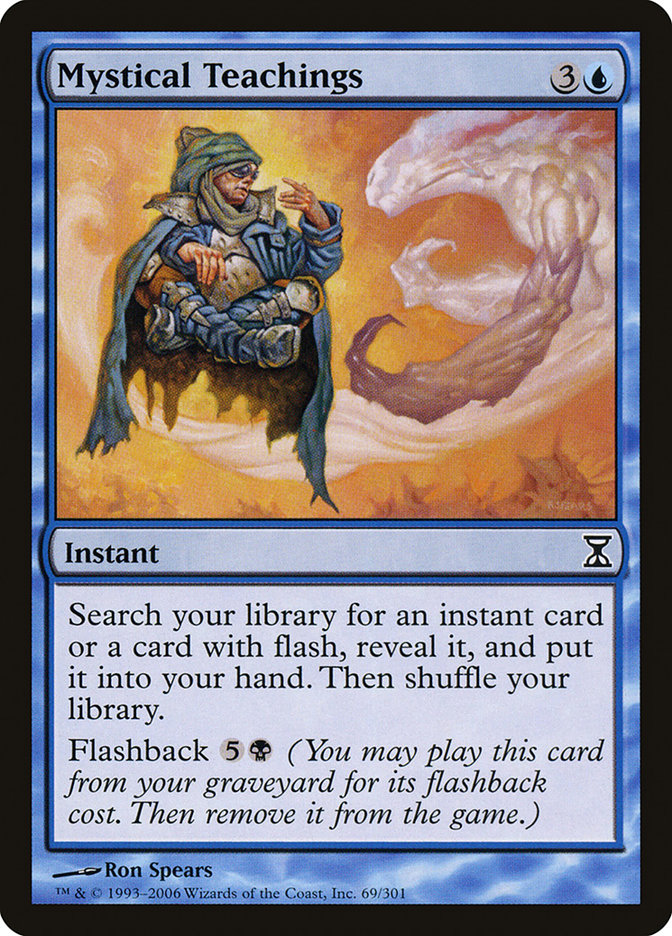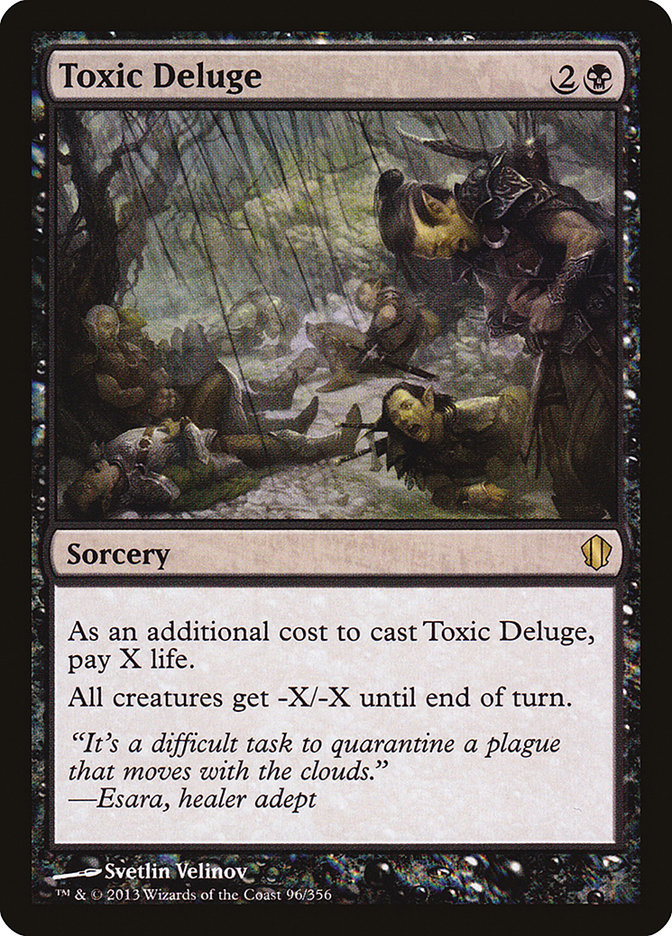I think it’s safe to say I had the best Legacy deck for the Season Three Invitational. Between myself, James Nguyen, and Todd Anderson, we went a combined 24-5 (82%!) over the weekend, including a 4-0 start for each of us.
Sure, we didn’t win or Top Eight anything, but maybe that keeps the deck under the radar for Grand Prix Seattle. Ultimately our poor Standard decks kept us from achieving glory.
Creatures (7)
Planeswalkers (1)
Lands (19)
Spells (33)

What Is This Deck Doing?
First of all, it’s important to note that this deck is a control deck. The second thing to note is why being a control deck is actually preferable to being a Delver of Secrets deck. To tell that story, we need to go back in time a bit.
I started streaming a few months ago and would play Legacy here and there, mostly for fun but actually as a way to figure out what was happening in the format so I could select my deck for the Season Three Invitational. Naturally I was playing with various forms of Shardless Sultai, trying to figure out the optimal mix of things.
The combination of discard has always appealed to me, especially in older formats. Defeating powerful combo opponents is always difficult, but that mix of disruption leaves me with a strong strategy against them. With Shardless Sultai, the lack of non-Force of Will permission was limiting and annoying. The real deal-breaker in the blue mirrors was Pyroblast, and there was basically nothing I could do to overcome that advantage.
During one of my streams, Alex Khanin suggested I try his deck, which he dubbed “Unbeatable Grixis.” I was skeptical, but I definitely didn’t lose many matches, so I set about working on the deck. In the meantime, I was tuning Shardless, but I knew it wasn’t the deck for me to play. Counterspells, discard, and Pyroblasts was where it was at.
I briefly detoured into the land of Sultai Control, but that deck had its own set of issues. Still, it was putting up reasonable results. The things I learned from flirting with that deck did help shape how I built my Grixis deck though, so it was still very worth it.
Many people were working on Grixis Control, such as Eli Kassis (who I believe created the original version of the deck) and Dr. Rich Shay (who had an interesting version with four Preordain). There was never a shortage of decklists to look at for ideas. Soon I had Grixis to where I wanted it.
The Engine
Most blue decks in Legacy run a low land count, which is the direct opposite to how blue decks are built in every other format. The difference is that Legacy allows you to play several cheap cantrips, which means you can make your land drops early while drawing more gas in the mid-game. Keeping one landers, even with Wasteland in the format, isn’t out of the ordinary.
Gitaxian Probe fits well into any deck with Cabal Therapy and it also generates a nice tempo boost with Young Pyromancer. Brainstorm is the best card in the format and should be used carefully, but it’s another card that helps you hit land drops early and find action late. Four Dig Through Time sits at the top of the curve as our big action spell.
Resolving a Dig through Time feels like resolving a Brainstorm where you hit all gas. Ultimately, you’re only up a single card and one or more of them might not be exactly what you wanted. The first Dig will likely stabilize you, but it’s the second and third Digs that put you over the top and put the game out of reach for your opponent. Mystical Teachings is also an apt comparison, although Dig is clearly more efficient.
We really want something to play on turn one to sculpt our draws, and Ponder is the perfect fit. I wouldn’t go below four of either piece of the engine, nor would I go above twenty lands. Right now, the deck does its thing and does it well, and I can’t imagine what the deck needs to be doing better that it isn’t already.
Dig Through Time also increases the value of unique effects in your deck. Since you end up seeing so many cards each game, you could play a card like Toxic Deluge and be able to find it with relative ease. Jace, the Mind Sculptor is another card that is a powerful one-of to have for when it’s time to close out the game, but I wouldn’t ever want to draw multiples.
There are several cards you could realistically consider for those flex slots, but be aware that those cards should count for a total of themselves. For example, you could play a few clunky singletons and get away with it, but if you play something like six clunky singletons, then you effectively have a six-of in your deck that you don’t want to draw early. That’s just not reasonable.
How It Plays Out
A friend of mine was watching me play some matches at a local Legacy tournament and brought up the differences in our play style. He tried the deck in the past and thought that maybe he’d abandoned it a bit too early, as the things I was doing seemed to make sense.
As I told Todd and James later, “I don’t think I’ve ever countered a removal spell on my creature unless it meant they were dead within a turn or two, or it virtually locked the game up.”
I’m not really focused on applying a clock, as that can come much later against certain decks. Of course, if an opportunity to get aggressive presents itself I’ll certainly take it, but this is no Delver deck. I’m more than content to play a Young Pyromancer and make a token or two before it dies, then try to ride those tokens for as long as I can. Basically, I won’t overextend into things like Terminus and I don’t value my threats highly.
Of course, all that changes against combo. You are the beatdown there and, given enough time, most combo decks will sculpt a better hand than yours. Realistically, the only time you need to put pressure on someone is when waiting is going to punish you. Against anyone else, I’m perfectly happy picking up a copy of Young Pyromancer off my second or third Dig Through Time rather than prioritizing it off my first Dig Through Time.
I’ve built the deck as a pure control deck in the sense that the deck has ways to lock up the game if you do go long. Counterspell, Snapcaster Mage, Pyroblast, and Jace, the Mind Sculptor give you enough tools to match their potential topdecks with your card drawing. You should be able to answer anything your opponent can throw at you. If you remove the Counterspell and Snapcaster Mage from the deck, you’ll likely find that your results differ.
The early turns are spent sculpting your hand as necessary and removing whatever threats your opponents present. Sometimes that means Force of Will-ing an early Delver of Secrets or making sure you stockpile enough removal spells. It could also mean assembling a wall of Elemental tokens (I prefer SP Steve Rubins, but Chris VanMeters work well also) to hold them off.
The Cards That Keep You Alive
I’d like to think that one of my specific skill sets in older formats is finding the correct removal suite. This time was no different.
Currently, Legacy is a format where Lightning Bolt is exceptional. Tarmogoyf is a rarity, but Monastery Mentor, Deathrite Shaman, Delver of Secrets, and Young Pyromancer run the format. Lightning Bolt is also a reasonable solution to Jace, the Mind Sculptor.
So four Lightning Bolts is a given, but what about the rest? Ideally, the deck would have some way to deal with big creatures or those with built-in protection. Sometimes, beating a Tarmogoyf with just Young Pyromancer is tough. And then there’s the issue of the Nimble Mongooses and True-Name Nemesises of the format. Since we’re already running some creatures that are nice fodder for Cabal Therapy, Innocent Blood looks very attractive.
Toxic Deluge was in the maindeck for a long time, despite X=1 killing every single creature in my deck. Having a sweeper in the maindeck is exceptional when you have Dig Through Time, but I also found it to not be entirely necessary. If you feel like you need a “training wheels” type of card Toxic Deluge is great, but it is by no means necessary.
The Ways To Stop Them
Force of Will is your main security, but Cabal Therapy is the nail in the coffin. It prevents combo decks from assembling a lethal mixture of spells, and kind of forces them to try and go off as soon as possible. That’s the power of heavy discard like Cabal Therapy or Hymn to Tourach in combination with countermagic.
The singleton Daze is kind of humorous, and right now the deck has a few flex slots. With any deck that’s interested in tapping out for Young Pyromancer, Daze should be a consideration regardless of how long you expect the games to go. If your opponent knows you’re playing Grixis Control (which I assumed would be the case with me at the Invitational), they likely won’t assume you have Daze. Even if they see Daze, see how they play in game two… they might stop playing around it, assuming you sideboarded it out.
Pyroblast was a card I considered playing more of maindeck for the Invitational, but I reasoned that I didn’t explicitly need them, plus the field is always kind of random at the bigger Invitationals. Sure enough, my first two rounds were against Death and Taxes and Elves.
How To Cabal Therapy
If you think you would be very good at using the “blind” Cabal Therapy, your win percentage will certainly suffer. All I can say is that during a game, you should be trying to discern what your opponent has at any given time. How they sequence their spells in the early game should also give some information away.
When your opponent leads with land, go, it’s often wise to not Cabal Therapy into their Brainstorm. I’ve played several games where I simply waited an additional turn or two on Cabal Therapy in order to Counterspell or Pyroblast their Brainstorm. The goal should be to get Cabal Therapy to hit and hit hard.
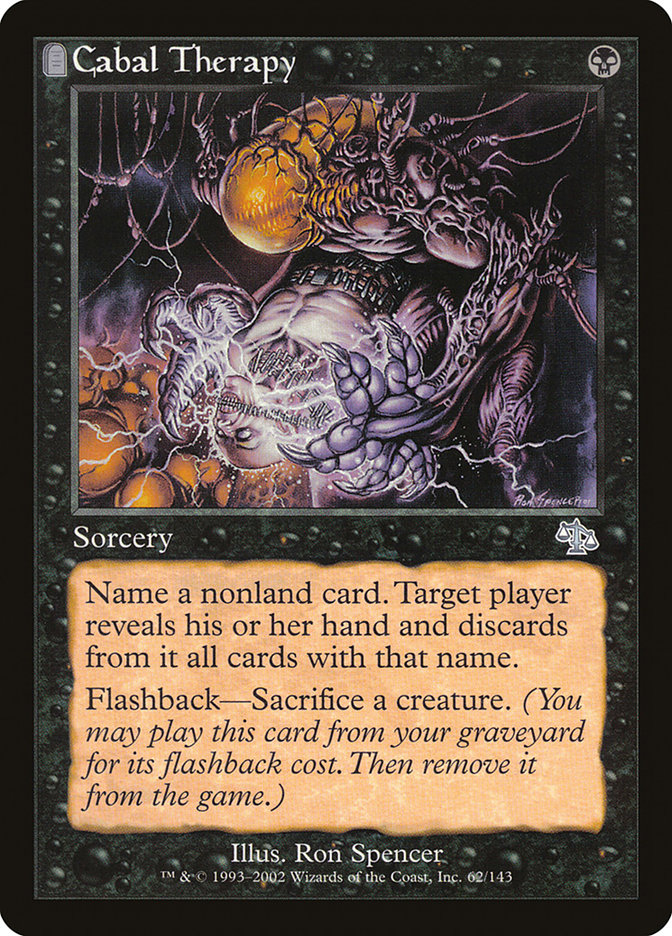 In my match at the Invitational against Joe Bass (which was super sick and I wish it was on camera, damn that kid is good), I blind Cabal Therapy-ed for Force of Will in order to prevent a Counterbalance from landing and hit. If he had it already, he probably would have jammed it, and I didn’t want him sculpting into a perfect hand. Since the early game was so light on action, Force of Will seemed like a likely card for him to have.
In my match at the Invitational against Joe Bass (which was super sick and I wish it was on camera, damn that kid is good), I blind Cabal Therapy-ed for Force of Will in order to prevent a Counterbalance from landing and hit. If he had it already, he probably would have jammed it, and I didn’t want him sculpting into a perfect hand. Since the early game was so light on action, Force of Will seemed like a likely card for him to have.
A few turns later, Joe had been sculpting his hand with Sensei’s Divining Top and was missing land drops. Again, I blind Cabal Therapy-ed for Force of Will and hit. I don’t think I have ever been in that situation before and yet it still ended up happening twice in the same game!
It’s also important to recognize when to give up the two-for-one with Cabal Therapy in order to take the card that really matters. Against Josh Cho in a casual game, I eventually realized I could have beaten his double Tarmogoyf hand, but would have really struggled against his Sylvan Library. Similarly, cards like Swords to Plowshares may have to be left alone in order to strip your opponent’s singleton Force of Will.
Card advantage is great, but if you’re sniping two of their irrelevant cards, what impact does it have on the game? Unless they absolutely need those resources to Brainstorm away, it will rarely matter. Instead, remember to focus on what matters. If you are going to lose to a certain card but there’s no way they could have it based on how the last turn played out, you don’t have to name it. However, if the card you’re naming has no impact on the game and you’re naming it just to hit, consider naming the card that you’d lose to, even if it seems like they can’t have it.
Cabal Therapy is one of the most skill-intensive cards in Magic history. Thankfully Gitaxian Probe gives you the freeroll every once in a while, but learning how to Cabal Therapy correctly will likely translate into more success in Magic as a whole. Get to practicing!
The Manabase
Mountain and Swamp are each horrendous and unnecessary, which leads to me playing all dual lands. Some of your turns will be cantrip, cantrip, Dig, and you can’t do that with lands that don’t make blue mana. Badlands is nice at times, but also has the same issues. In theory, you could play something like Cascade Bluffs to get around that, but it has its own set of issues.
I could see wanting a fifth Volcanic Island of sorts, either with Steam Vents or Sulfur Falls. There is some merit to playing around cards like Choke, Blood Moon, and Price of Progress, but I generally like ignoring them. They only show up in the fringiest decks, and bastardizing my manabase for minor percentage points in those rare matchups is not the best way to go about winning tournaments.
Maybe I’ll lose a game here or there, but that’s fine in the grand scheme of things.
If you wanted to play Blood Moon in your own sideboard, that’s certainly doable although not something I would necessarily recommend. Mountain is definitely not good, Swamp is mostly unplayable, and even basic Island isn’t very good. You’re not as color-intensive as Shardless Sultai, but it’s close enough that I’d rather play without basic lands. In that case, I think we can find something else to fight the strategies that we might want Blood Moon against.
How Good Is Jace, Vryn’s Prodigy?
It’s a helluva card actually, although one that didn’t do a ton of work for me in the Modern Premier IQ I finished sixth at. In my Top Eight match against Shaheen Soorani, I played it on turn two only for it to be hit with a Karakas for the rest of the game. The game was still close, and if it were a Snapcaster Mage instead, I likely would have won.
Matchups And Sideboarding
I’m not going to cover every single deck here since that would be kind of impossible, but instead I’ll touch on the primary versions of deck archetypes and hopefully you can infer the rest.
VS Miracles
This matchup is a ton of fun since there are interesting things happening on both sides. They have Pyroblast, Sensei’s Divining Top, Counterbalance, and a potential sideboarding juke, but Grixis seems to have the edge. For as much as they have going on, they never really seem to sideboard well against me. Either they overvalue Swords to Plowshares and Terminus, or they don’t have enough threats, or they try to play a longer game that Grixis is better equipped to win.
Out:
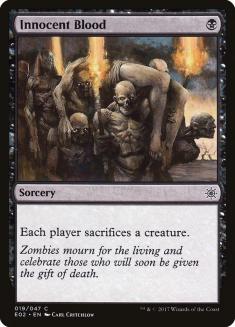

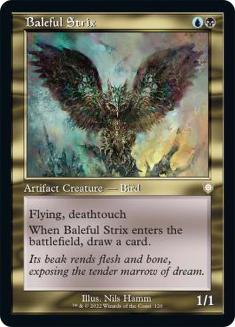
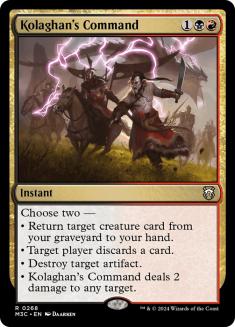
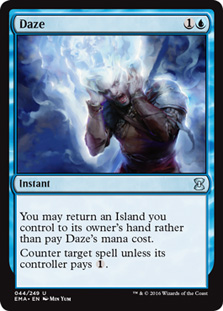
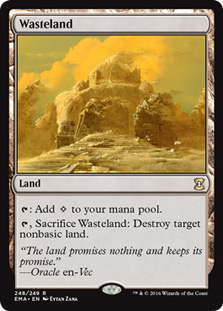



In:
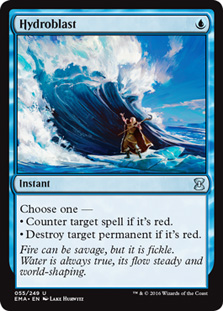
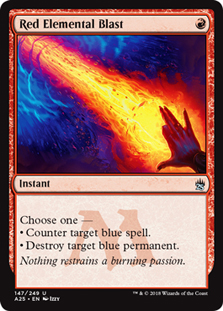

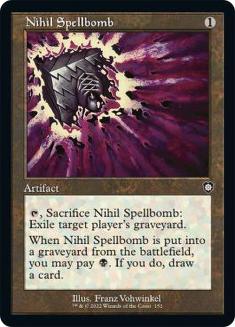

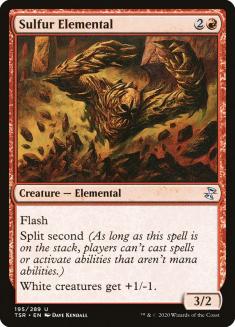

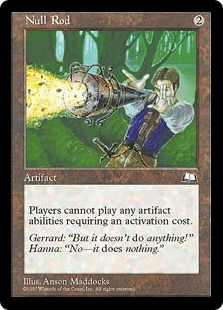
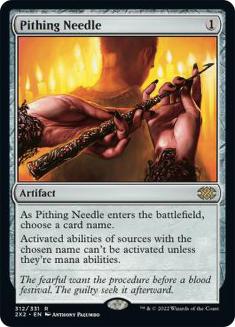
After sideboard I definitely expect some Monastery Mentors, which is part of the reason why I have so many Sulfur Elementals in my sideboard. When I had to keep in more Lightning Bolts I felt like I had to dilute my deck, which further played into what few trumps they did have. Instead of accepting it as reality, I looked for a solution to that problem. Sulfur Elemental gives you a threat, even if they don’t have Monastery Mentors, and that allows you to sideboard rather fluidly and still not get caught in their traps.
Wasteland can come out since they will typically fetch basics. However, if your opponent is careful and is frequently exposing their only red source to Wasteland, it’s probably worth keeping. Also, if they have Cavern of Souls, you’ll want the Wasteland. Hydroblast is for Wear//Tear and their Pyroblasts. Baleful Strix stays in as another creature to sacrifice to Cabal Therapy and as a way to not get beaten down by Vendilion Clique.
Daze is awkward against a deck that is always trying to keep open mana for Sensei’s Divining Top, but sometimes they just jam Jace so I could see it staying in. If they seem to overvalue removal, feel free to trim a Young Pyromancer.
While Force of Will is card disadvantage, you’re going to be fighting wars over Counterbalance, Jace, the Mind Sculptor, and Entreat the Angels. Nothing else they can do really matters, so it’s best to have as many answers as possible. If they are threat-heavy with Cavern of Souls, Force of Will is going to be less good.
The single thing I hate most about my list is the fact that I have Null Rod and Nihil Spellbomb in my sideboard and frequently bring them in together. Null Rod doubles as Storm hate, but I could easily see it being another Pithing Needle. The other option is switching your graveyard hate over to something like Surgical Extraction or Leyline of the Void. Some Miracles decks have many Dig Through Times and Snapcaster Mages, so Leyline of the Void is quite good there, but most of the decks I’ve played against lately maybe have two of each.
Be patient, play carefully, and tear them apart.
VS Grixis Delver
In theory, this matchup should be good since you’re the bigger version of their deck. However, Delver of Secrets is quite good at beating up on stumbling opponents, so you have to be wary.
Out:
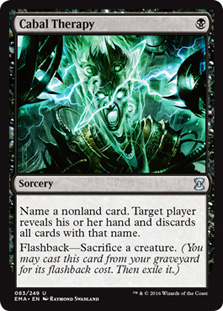


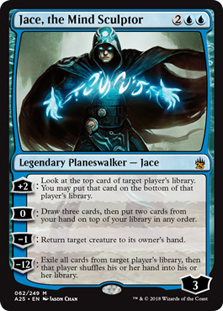
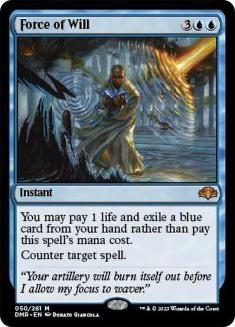


In:



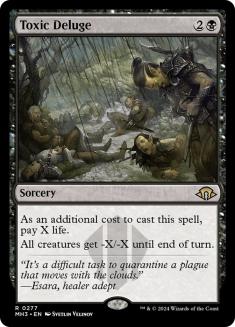



I typically like Force of Will against Delver decks because the games are all about what’s on board. However, in the case of Grixis, their deck is a little grindier and it’s entirely possible the game just goes long. Still, Jace, the Mind Sculptor is a huge liability against Lightning Bolt and Pyroblast, so I’m not a huge fan. I want to keep their board clear and my better end game should take over.
VS Lands
You’re the beatdown here. Given enough time, they will either lock you out of the game or kill you with a Marit Lage, so you’ve got to get them dead.
Out:
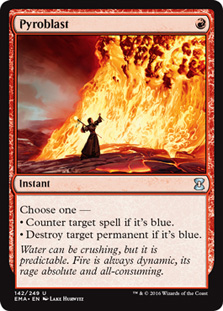




In:
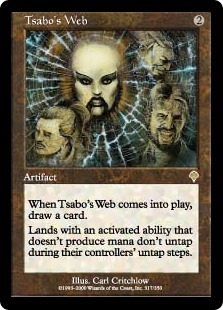




I prefer the Lightning Bolts to Innocent Blood because they actually matter when you’re trying to kill them. Plus, they will often stabilize at a low life total. The idea of blocking a Marit Lage token with a Baleful Strix, killing it with an Innocent Blood, and then going on to win is a pipe dream. Keep Exploration effects off the table and you might be OK.
Cards like Null Rod, Kolaghan’s Command, and Thoughtseize might be useful depending on how they sideboard against you, but it’s unlikely.
Overall, this matchup is not great, and I probably want more sideboard slots for it.
VS Omni-Tell
Their deck is as straightforward as they come. The only tricky move they have is whether or not to bring in Young Pyromancers of their own.
Out:







In:







Don’t get caught with your pants down against a sideboarded Young Pyromancer and find a Cabal Therapy. Life should be easy from there.
VS Death And Taxes
This matchup should be difficult, but I’ve got a lot of hate. Their mana denial, Aether Vials, Mother of Runes, taxing effects, and equipment can be tough though.
Out:






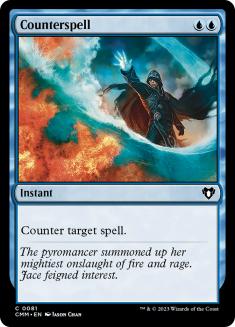

In:







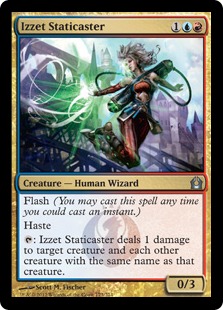
Kill their stuff, shred their hand, blow up their artifacts, and eventually win the game.
Going Forward
As long as Dig through Time remains in the format, this deck will continue to be a contender. I cannot stress how awesome Cabal Therapy, Force of Will, and Pyroblast are right now, and this deck gets to play them all. This deck is phenomenal, and I’m going to continue playing it until they tell me I can’t. If you enjoy blue decks in Legacy, you should be doing the same.


